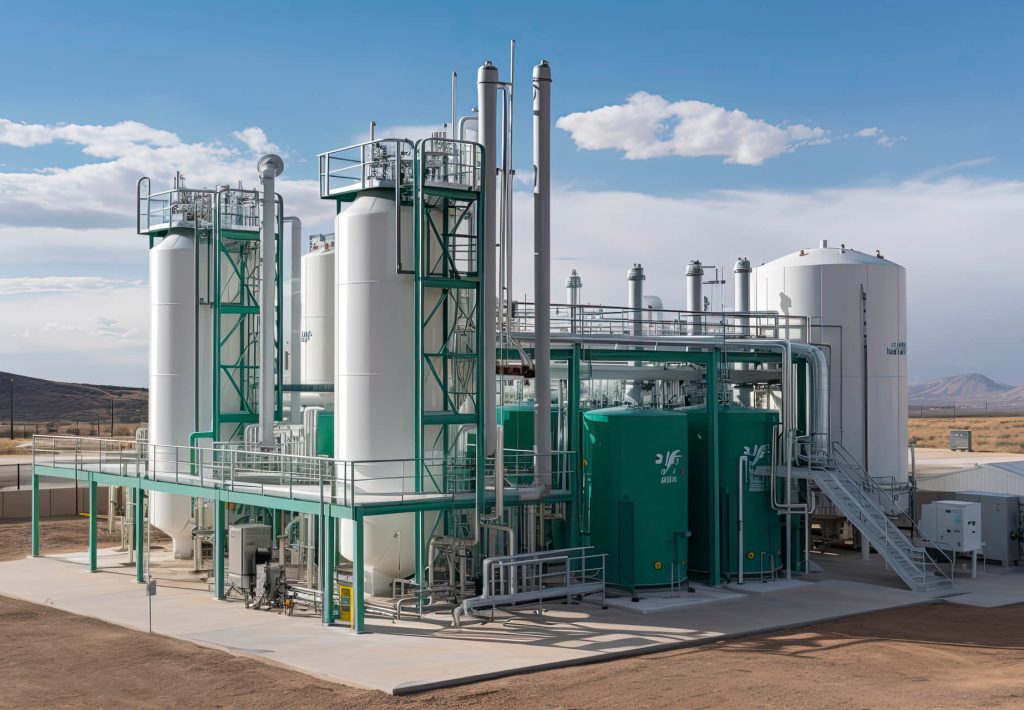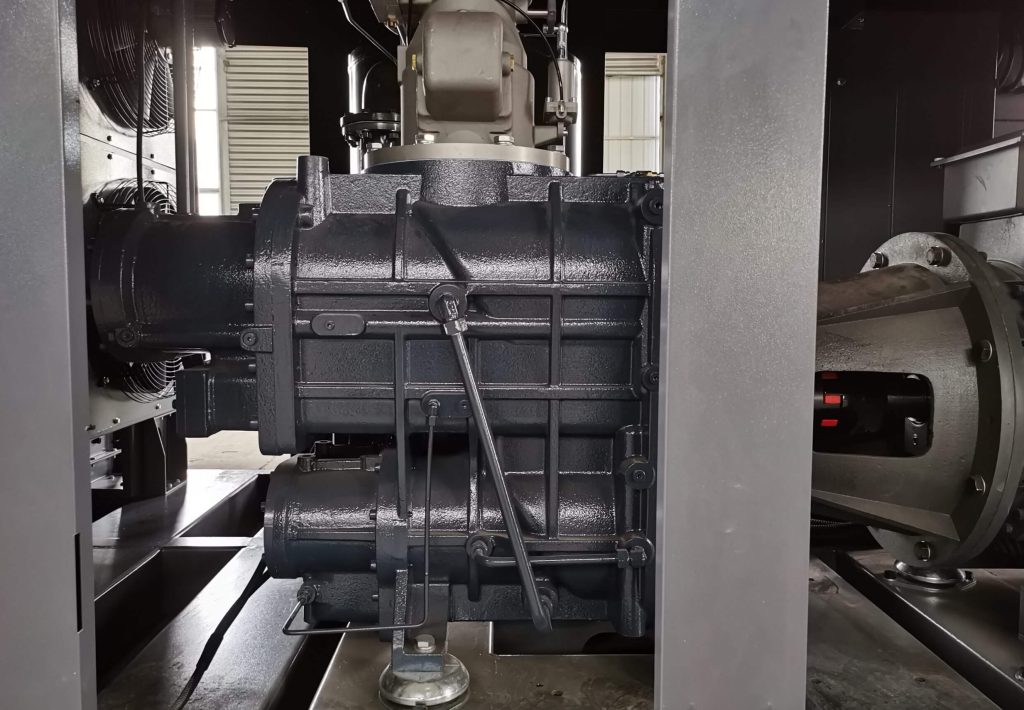As the global industrial sector increasingly demands stricter air quality standards, oil-free air compressors have become essential equipment for high-precision industries such as healthcare, pharmaceuticals, electronics, and food and beverage. With numerous technical parameters and models available in the market, how can you find the most suitable oil-free air compressor for your application? This article will provide a comprehensive analysis of the key factors when selecting an oil-free air compressor and offer professional advice to help you make an informed decision.
When selecting an oil-free air compressor, it is essential to consider factors such as exhaust pressure, airflow, power selection, and compliance with ISO 8573-1 Class 0 certification to ensure energy efficiency and air quality. Additionally, noise control, the ability to meet specific environmental requirements, and the use of variable frequency technology can effectively reduce energy consumption and improve operational stability. It is recommended to request a customized selection report and conduct on-site testing before making a decision to ensure equipment performance.

1. Core Selection Factors: In-Depth Technical Analysis
1. Exhaust Pressure: The Balance of Energy Consumption and Efficiency
- Scientific Matching Principle: The rated exhaust pressure of the compressor should equal the sum of “required equipment pressure + pipe pressure drop + auxiliary equipment pressure drop,” not blindly choosing a higher pressure level. Every increase of 0.1 MPa in exhaust pressure can increase energy consumption by 5-8%.
- Practical Application Strategy: If most of your equipment requires low pressure and only a few need high pressure, it is advisable to use a separate high-pressure oil-free compressor instead of raising the pressure level for the entire system.
- Unit Conversion Guide: Common international pressure units include Bar, MPa (megapascal), and kg/cm² (kilogram per square centimeter). 1 MPa = 10 Bar ≈ 10.2 kg/cm². Understanding the pressure unit used by your equipment is crucial for correct selection.
2. Airflow Calculation: The Key to Preventing Resource Waste
- Accurate Calculation Formula: Required airflow = total gas consumption of all equipment × 1.1-1.2 (safety coefficient). This coefficient accounts for pipeline leakage and fluctuations in equipment usage.
- Pressure-Flow Relationship: Pay close attention! The actual airflow of an oil-free air compressor decreases as pressure increases. For instance, a model may provide 100 L/min at 1 kg pressure, but only 40 L/min at 7 kg pressure. Ensure you verify the exhaust volume at the rated operating pressure.
- Unit Conversion: 1 m³/h = 1000 L/min. Common international units are L/min (liters per minute) and CFM (cubic feet per minute), with 1 CFM ≈ 28.3 L/min.
3. Power Selection: The Core of Energy Efficiency Optimization
- Energy Efficiency First Principle: A higher power rating is not always better. Choosing a compressor with a smaller power rating, as long as it meets the flow and pressure requirements, can significantly reduce long-term operating costs.
- International Energy Efficiency Standards: Focus on ISO 1217:2009 (reciprocating compressor performance testing standards) and ISO 50001 energy management system certification to ensure equipment meets international energy efficiency standards.
4. Air Quality Certification: Guaranteeing Oil-Free Authenticity
- Certification Level Identification: A true oil-free compressor must meet the ISO 8573-1 Class 0 oil-free certification, which is currently the globally recognized highest standard for oil-free compressors.
- Technology Selection:
- Water-lubricated Oil-Free Screw Compressors: Lower cost but not suitable for low-temperature environments (risk of freezing).
- Fully Oil-Free Scroll/Rotary Vane: Uses self-lubricating materials, completely oil-free, suitable for sensitive environments such as medical or laboratory settings.
- Post-Treatment Pitfalls: The traditional “micro-oil compressor + post-treatment” solution cannot completely remove oil molecules and fails to meet Class 0 standards.
5. Noise Level: The Deciding Factor for Workplace Comfort
- Decibel Measurement: Do not rely on manufacturer-claimed noise values. Request third-party test reports or listen to the compressor’s running noise on-site. High-quality, quiet oil-free compressors should maintain a noise level between 40-60 dB(A).
- Noise Reduction Technology: Opt for equipment that uses scroll technology (e.g., MINNUO oil-free scroll compressors), which reduces noise by over 30% compared to traditional piston compressors. Also, ensure the equipment is equipped with vibration-dampening devices and soundproof covers.
2. Special Application Selection Guide
1. Medical and Laboratory Applications
- Certification Requirements: Must comply with ISO 13485 medical device quality management system and FDA certification.
- Recommended Technology: Scroll-type oil-free compressors are the best choice due to their zero oil contamination and low vibration characteristics, protecting delicate instruments.
- Special Requirements: Must be equipped with bacterial filters (0.01μm) and ultra-low temperature dryers (dew point -70°C) to meet sterile environment requirements.
2. Industrial Production Line Applications
- High Flow Solutions:
- Medium Flow (10-40 m³/min): Choose oil-free rotary vane compressors.
- Large Flow (>40 m³/min): Oil-free screw compressors or centrifugal compressors are more economical.
- Energy-Efficient Configuration: Variable frequency drive (VSD) technology can save 30% energy, especially suitable for production lines with fluctuating gas usage.
3. Mobile and On-Board Applications
- Power Compatibility: Ensure the equipment supports vehicle voltage (12V/24V DC) or is equipped with a wide voltage motor (100-240V AC).
- Structural Design: Choose compact, shock-resistant mobile units. Aluminum alloy bodies, which reduce weight by over 30%, are better suited for mobile use.
4. Extreme Environment Applications
- High-Temperature Environments (>40°C): Choose independent air-cooled or water-cooled models. Each 5°C increase in ambient temperature can reduce equipment lifespan by 15%.
- Low-Temperature Environments (<5°C): Avoid water-lubricated models (which carry a freezing risk) and opt for equipment with TEFLON self-lubrication technology.
3. Maintenance and Troubleshooting: Ensuring Long-Term Stable Operation
1. Daily Maintenance Key Points
- Draining Cycle: Drain the air tank and dryer at least once a week to prevent water accumulation, which could cause corrosion and bacterial growth.
- Filter Maintenance: Clean the intake filter every 3 months (foam sponge filters can be washed, while felt filters should be blown out with compressed air).
- Heat Management: Clean the cooling channels with compressed air every quarter to ensure heat dissipation efficiency. Poor heat dissipation can cause a 10°C rise in operating temperature, halving the motor’s lifespan.
2. Common Troubleshooting
| Fault Phenomenon | Possible Cause | Solution |
| Exhaust Temperature >100°C | Cooling fan malfunction / High ambient temperature / Dirty oil cooler | Clean radiator, check fan operation, ensure proper ventilation |
| Insufficient Air Supply | Pipe leakage / Worn diaphragm / Blocked check valve | Perform leak detection, replace diaphragm (life: approx. 3 years), clean check valve |
| Frequent Start/Stop | Pressure switch differential too small / Insufficient air tank capacity | Adjust pressure switch differential to 0.15-0.2 MPa, increase tank capacity |
| Difficulty Starting | Low voltage (<200V) / Faulty start capacitor | Install stabilizer, replace capacitor of the same UF rating |
4. Brand and Service: Ensuring Long-Term Investment Protection
1. International Brand Comparison
- European High-End Brands (e.g., BOGE, Atlas Copco): Mature technology but come with a 40-60% premium.
- International Professional Brands (e.g., MINNUO): Certified with EU CE and North American cURus certifications, offering a better cost-performance ratio.
- Certification Key Points: Require suppliers to provide TÜV oil-free certification and energy efficiency test data.
2. Service Network Evaluation
- Spare Parts Supply: Confirm global delivery time for common spare parts (diaphragms, valve plates, filters), ideally within 72 hours.
- Technical Support: Choose manufacturers offering multilingual remote support, and prioritize brands with AR remote assistance technology.
- Warranty Terms: Compare warranty periods for core components (motor should be ≥5 years, whole unit ≥2 years), and check if on-site service is included.
5. Oil-Free Air Compressor FAQ
Q: Why must I choose a Class 0 oil-free certified air compressor? Can’t a regular “micro-oil” model with post-treatment suffice?
A: Traditional micro-oil compressors, even with multi-stage filtration, still allow 0.01-0.1 ppm of oil molecules into the airflow, which is unacceptable in sensitive industries like healthcare and chip manufacturing. Only Class 0 certified equipment ensures 100% oil-free air.
Q: How do I accurately calculate the required airflow?
A: Follow these three steps: (1) List the rated flow of all gas-consuming equipment (L/min); (2) Calculate the simultaneous usage coefficient (usually 0.6-0.8); (3) Total flow = Σ (equipment flow × simultaneous coefficient) × safety margin.
Q: Can I install an oil-free air compressor in an outdoor setting?
A: Outdoor installation is possible, but adequate protection against dust, rain, and extreme temperatures must be ensured. It’s recommended to use a weatherproof shelter and employ anti-corrosion coatings on exposed parts.
6. Conclusion
Choosing an oil-free air compressor is a far-reaching investment decision. Accurately matching technical parameters, strictly adhering to oil-free standards, considering special environmental requirements, and ensuring comprehensive service support are key to ensuring reliable operation of the equipment for ten years. As a global supplier certified by ISO 8573-1 Class 0, MINNUO recommends requesting a customized selection report and arranging on-site testing before making the final decision to verify equipment performance with real data.
True oil-free technology not only protects your production equipment but also safeguards your brand reputation.






 Email
Email sales:+86 15366749631
sales:+86 15366749631

